How to Identify Your Target Market
Having a product or service to sell, but not putting the word out on the streets, is kind of like kissing a girl in a closet – you know about it, but no one else does. Enter the concept of advertising. Not to understate things, but it “can” be relatively simple to advertise to the masses. The trick, of course, is making sure that your advertising is reaching the right people. Knowing whom and when to market your product or service to can result in much higher rates of return and it involves implementing systems, rather than relying on indiscriminate marketing. Let’s talk a little bit about identifying just precisely who your target market is.
To be effective, you must sharpen your focus. Determine what your main priorities are in relation to whom you wish to reach with your marketing and what needs or wants your product or service fulfills. As you answer the latter part of this, consider factors like age, buying power, marital status and geographic location. For example, a middle-aged mother of three has different needs and desires than a college sophomore. She also tends to spend her disposable income in a much different way. Likewise, millennial men, on average, spend twice as much on clothing than their non-millennial counterparts. GM and Ford understand that marketing pickup trucks to drivers in North Dakota or Texas will yield better results than trying to market them in New York City.
So how do we start? Try using a multi-stage funnel approach. For example, your first “stage” or “level” into the wide mouth of the funnel might be gender. Than perhaps the next level might further narrow things down to a specific age-range. Next, you might further thin-out those targets by income level (or geography, etc). The trick is that you need to experiment with different criteria to narrow down to a well-defined description of who your ideal customer is; the one that can generally describe who the majority of your customers are.
Your funnel should also consider what the primary value proposition of your product or service is. For example, suppose you are marketing a camera that can withstand hard drops, rough handling and submersion in water. Those could be value propositions well-received by outdoor enthusiasts. And let’s take this a step further – where do those individuals shop?
Choosing the right markets also means that you should be consciously collecting some objective data. Some ways you might do this are through surveys. These can be accomplished by mail, through your website, via a newsletter, by personal interview, or even by purchasing the data from companies that specialize in data collection.
Likewise, don’t overlook drawing on existing data. If your business offers a product or service similar to those already on the market, do as much homework as possible. What demographic groups are buying these products? When do they buy them? Which specific products in the entire lineup are most popular?
Perhaps you are looking to market your own coffee shop. Go spend some time at a competitor’s establishment … and preferably several. As people place their orders at the counter, take careful notes – what drink did each person buy? How old is each person, and what is his or her gender and ethnicity? Is a particular drink especially popular? When is the store busiest? Once you compile your data, you can then apply the findings to the marketing efforts for your own coffee company. There is a plethora of data that you can find online to gather a macro view of the type of customers who are purchasing products similar to what you offer, as well.
The next time you are in front of friends, customers or colleagues, ask them to look at your product or service and offer-up their perspective on its uses. You may be surprised and learn of some innovative ways in which it could be used or by whom it might seem to be desirable.
Whenever possible, draw on diverse perspectives as you build your marketing efforts. Your end goal is to make it easy for your target demographic groups to see connections between their needs and your product. The analysis of multiple streams of data, as well as a continual effort to identify your target customers, can help you achieve this end and maximize your ROI.
***
TITAN Business Development Group, LLC
coaching | consulting | results
www.TitanBDG.com





















